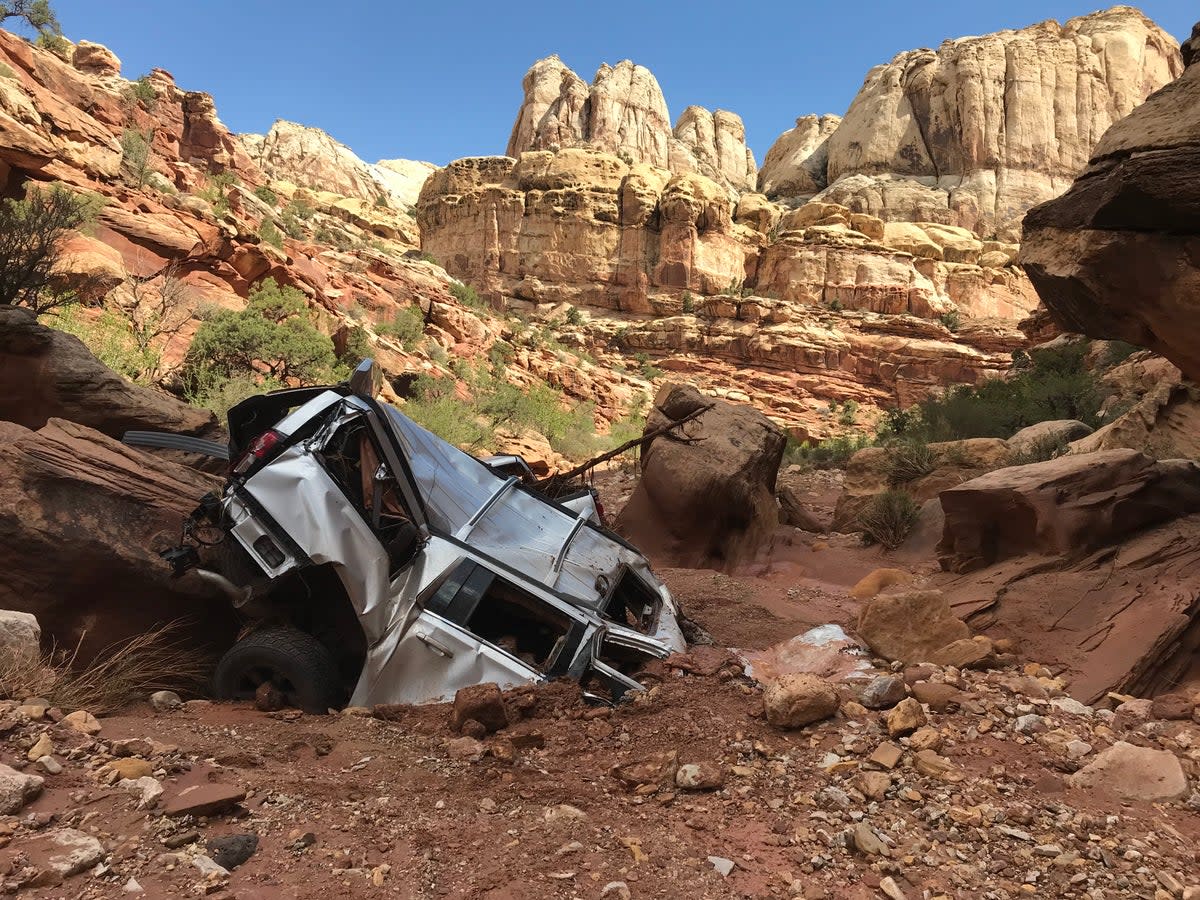Flash flooding threat increases in Utah after 60 hikers left stranded in national park

The National Weather Service (NWS) is warning of possible flash floods this week in central and southern Utah as storms bring potentially heavy rain.
The advisory comes less than a week after 60 hikers were rescued from flash flooding in Capitol Reef National Park in the southern centre of the state.
Utah residents and visitors to the area’s numerous parks and reserves are warned to stay vigilant and avoid driving through flooded roads.
This Wednesday and Thursday brings a “moderate” risk of flash flooding, NWS says, meaning that “some slot canyons, dry washes and small streams are expected to experience flash flooding.”
They also noted that roads around Glen Canyon National Recreation Area and Grand Staircase-Escalante National Monument could see flash floods.
Last week’s flooding at Capitol Reef led to stranded visitors being rescued by helicopter, reported the Associated Press. A county spokesperson told AP that there had been no fatalities and only minor injuries.
Places like slot canyons are especially vulnerable to flash floods, as the narrow deep canyons can fill up with water quickly — leading to dangerous and potentially deadly conditions for unaware hikers.
The southern and central portions of Utah are home to plenty of canyons and other dramatic geology, including in Zion, Bryce Canyon, Capitol Reef, Canyonlands and Arches national parks.
The storms last week were part of the “monsoon” season, AP reports. The monsoon in Utah usually lasts from mid-summer to early autumn, reports ABC4, and can bring thunderstorms that result in flooding.
Flash floods form when an intense amount of rainfall falls quickly, leading to rapidly rising waters. This rapid onsiet makes them the most dangerous form of flooding, according to the National Oceanic and Atmospheric Administration.
Flash flood risk could get higher in many parts of the county as the climate crisis grows, too. A recent study found that if emissions are left unchecked, warming could lead to more intense storms with a lot more water coming down in a short period of time — leading to a higher risk of flash flooding.
In addition to places like canyons and streambeds, flash floods can also hit urban areas — like last year’s flash floods from Hurricane Ida in the New York City area that left dozens of people dead.

